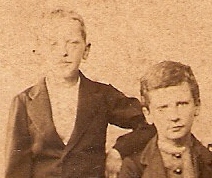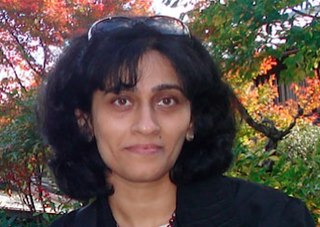Related Research Articles

Algae is an informal term for a large and diverse group of photosynthetic, eukaryotic organisms. It is a polyphyletic grouping that includes species from multiple distinct clades. Included organisms range from unicellular microalgae, such as Chlorella, Prototheca and the diatoms, to multicellular forms, such as the giant kelp, a large brown algae which may grow up to 50 metres (160 ft) in length. Most are aquatic and lack many of the distinct cell and tissue types, such as stomata, xylem and phloem that are found in land plants. The largest and most complex marine algae are called seaweeds, while the most complex freshwater forms are the Charophyta, a division of green algae which includes, for example, Spirogyra and stoneworts.
Auxenochlorella protothecoides, formerly known as Chlorella protothecoides, is a facultative heterotrophic green alga in the family Chlorellaceae. It is known for its potential application in biofuel production. It was first characterized as a distinct algal species in 1965, and has since been regarded as a separate genus from Chlorella due its need for thiamine for growth. Auxenochlorella species have been found in a wide variety of environments from acidic volcanic soil in Italy to the sap of poplar trees in the forests of Germany. Its use in industrial processes has been studied, as the high lipid content of the alga during heterotrophic growth is promising for biodiesel; its use in wastewater treatment has been investigated, as well.

Choricystis is a genus of green algae in the class Trebouxiophyceae, considered a characteristic picophytoplankton in freshwater ecosystems. Choricystis, especially the type species Choricystis minor, has been proposed as an effective source of fatty acids for biofuels. Choricystis algacultures have been shown to survive on wastewater. In particular, Choricystis has been proposed as a biological water treatment system for industrial waste produced by the processing of dairy goods.

Algae fuel, algal biofuel, or algal oil is an alternative to liquid fossil fuels that uses algae as its source of energy-rich oils. Also, algae fuels are an alternative to commonly known biofuel sources, such as corn and sugarcane. When made from seaweed (macroalgae) it can be known as seaweed fuel or seaweed oil.

Johannes Reinke was a German botanist and philosopher who was a native of Ziethen, Lauenburg. He is remembered for his research of benthic marine algae.

Isabella Aiona Abbott was an educator, phycologist, and ethnobotanist from Hawaii. The first native Hawaiian woman to receive a PhD in science, she became a leading expert on Pacific marine algae.
Algae fuel in the United States, as with other countries, is under study as a source of biofuel.
Mary Winifred Parke, FRS, was a British marine botanist and Fellow of the Royal Society (1972) specialising in phycology, the study of algae.

Vidita Vaidya is an Indian neuroscientist and professor at the Tata Institute of Fundamental Research, Mumbai. Her primary areas of research are neuroscience and molecular psychiatry.
Michael Melkonian is a German botanist and professor of botany at the University of Cologne.
Aditi Pant, is an Indian oceanographer. She was the first Indian woman to visit Antarctica, alongside geologist Sudipta Sengupta in 1983 as part of the Indian Antarctic Program. She has held prominent positions at institutions including the National Institute of Oceanography, National Chemical Laboratory, University of Pune, and Maharashtra Academy of Sciences.
Máirin de Valéra MRIA was an Irish phycologist. She was the first chair and professor of Botany at University College Galway.

Vidyavati, former Vice-Chancellor, Kakatiya University, Warangal, Telangana, India was born on 15 September 1939, in Goud community. She is President of Phycological Society of India. She was honored by Telangana State Government as Eminent Women on 8 March 2017, on the occasion of "International Women's Day" celebrations.
Gopalasamudram Sitaraman Venkataraman (1930–1998) was an Indian botanist, academic and the director of the Indian Agricultural Research Institute (IARI), New Delhi. He was also a director of the DBT Centre for Blue-Green Algae at Madurai Kamaraj University and a recipient of the VASVIK Industrial Research Award and Om Prakash Bhasin Award. The Government of India awarded him the fourth highest civilian honour of the Padma Shri in 1992.
Elsie Conway was a British phycologist. She served as president of the British Phycological Society from 1965 to 1967, and was one of the earliest women Fellows of the Royal Society of Edinburgh.
Madura S. Balakrishnan (1917–1990) was born and raised in Madras, Madras Presidency, British India. He was a well-known botanist and he served various government positions and worked for some time at the University of Pune. He was the student of phycologist Professor M.O.P. Iyengar. The standard author abbreviation M.S.Balakr. is used to indicate this person as the author when citing a botanical name.
Alison Gail Smith, Lady Hopper is Professor of Plant Biochemistry in the Department of Plant Sciences at the University of Cambridge, UK. Her research investigates the metabolism of plants, algae and bacteria, in particular vitamin and cofactor biosynthesis.
Amita Aggarwal is an Indian clinical immunologist, rheumatologist and a Professor and Head at the Department of Clinical Immunology and Rheumatology of the Sanjay Gandhi Postgraduate Institute of Medical Sciences, Lucknow. Known for her studies in autoimmune rheumatic diseases, Aggarwal is a recipient of the Shakuntala Amir Chand Award of the Indian Council of Medical Research and an elected fellow of the National Academy of Sciences, India, National Academy of Medical Sciences and the National Academy of Medical Sciences. The Department of Biotechnology of the Government of India awarded her the National Bioscience Award for Career Development, one of the highest Indian science awards, for her contributions to biosciences in 2004.
Valerie May was an Australian phycologist, a pioneer and noted expert on toxic algae and water quality, and an interdisciplinary scientist who undertook algal ecology studies in Australia.
Alan Bridson Cribb Jr. is an Australian botanist and mycologist and an expert in marine and freshwater algae and seaweeds. He has also written on native and wild foods of Australia.The standard author abbreviation Cribb is used to indicate this person as the author when citing a botanical name.
References
- ↑ "Dr. Meenakshi Bhattacharjee". mbb3.web.rice.edu.
- ↑ "Women in Science - IAS Initiative" (PDF). Retrieved 13 March 2014.
- 1 2 "Barkatullah University Profile" (PDF). Archived from the original (PDF) on 23 January 2013. Retrieved 13 March 2014.
- ↑ "Madhya Pradesh government announces names of science awardees". The Times of India.indiatimes.com. 25 August 2012. Retrieved 14 March 2014.
- ↑ "The National Academy of Sciences, India - Life Members". Nasi.org.in. Retrieved 14 March 2014.
- ↑ "Biofuels From Algae In Wastewater". The Water Network. Retrieved 14 June 2023.